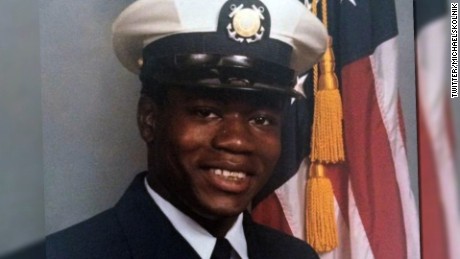NORTH CHARLESTON, S.C. (Reuters) – The South Carolina city where a white police officer shot dead an unarmed black man one year ago still simmers with racial tension as black residents say they continue to be harassed and humiliated by law enforcement.
Patrolman Michael Slager killed motorist Walter Scott on April 4, 2015, firing eight times at his back as he fled a traffic stop for a broken tail light. A bystander captured the shooting on cell phone video. Scott, 50, was a father of four.
Slager’s arrest on a murder charge may have helped spare North Charleston the rioting that took place in other U.S. cities after police killings of black men. He is awaiting trial, his lawyers saying he acted in self-defense.
African Americans say their demands for more transparency in police practices, such as the creation of a citizen review board, have gone unheeded. Some complain of being subjected to overly aggressive policing and racial profiling.
“This has got to stop. It’s going to affect our children and our grandchildren. We need to clean house,” Milton Brewer, a businessman and retired Air Force veteran, said last month at a community gathering called by the National Association for the Advancement of Colored People (NAACP).
Civil rights organizations are urging the U.S. Justice Department to investigate the police department. The NAACP’s legal defense fund has collected testimonials they hope will bolster the request for a federal probe, said lawyer Monique Dixon.
“We want to make sure it doesn’t happen again,” said Edward Bryant III, president of the NAACP’s North Charleston chapter. No one should “act as judge, jury and prosecutor on the streets in a police car.”
Mayor Keith Summey, who declined an interview request, said in a statement that steps had been taken to rebuild trust in the city where 47 percent of the 106,000 residents are black and about 78 percent of the city’s police force is white, as are Summey and Police Chief Eddie Driggers.
The entire police force is now equipped with body cameras and the department launched two new community outreach programs, including “front porch visits” aimed at forging relationships between people and law enforcement.
Driggers “has built a more responsive, yet gentler department than what we had at the beginning of 2015,” Summey said. Driggers did not respond to an interview request.
RACIAL PROFILING
The Charleston Area Justice Ministry, an interfaith group that works for social change, will ask the police department to allow an external audit of its records for evidence of racial bias after the group said it collected anecdotes of unwarranted searches and questioning.
The group plans to present its findings to the city this month, member Bill Thomas said.
State records show black drivers continue to be stopped by North Charleston police at a higher rate than white drivers.
In both the nine months before Scott’s death and the nine months after, black drivers were stopped at almost twice the rate of white drivers. Total traffic stops dropped by more than half in the nine months following the shooting, according to the state Department of Public Safety.
“I think they’re laying low,” James Johnson, president of the South Carolina chapter of the National Action Network and a North Charleston resident, said of police. “They’ve been under scrutiny.”
Slager, 34, was released on bail in January and is scheduled to be tried in October. He has said he feared for his life after being attacked by Scott following the stop.
He was dismissed from the force, and the city reached a $6.5 million wrongful death settlement with Scott’s family last fall.




























